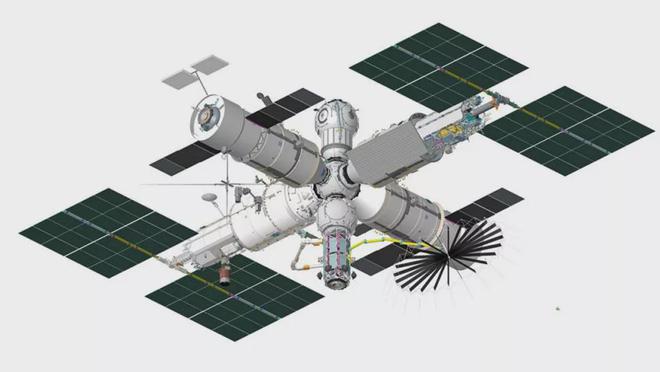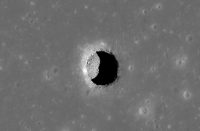Images and information released by the Russian Federal Space Agency (Roscosmos) show that the country plans to build the Russian Orbital Service Station (ROSS), with the first phase of assembly scheduled to begin in 2028, including the launch of the core module, the use of a new resupply spacecraft and a new of the launch vehicle. The second phase of work is expected to begin in 2030, mainly adding two larger modules.
However, the design of ROSS has not yet been finalized. For example, it could be placed in an orbit of 51.6 degrees (similar to the orbit of the International Space Station), or it could be placed in a near-polar 97-degree orbit. Roscosmos sees the exit from the International Space Station project as an opportunity to turn its attention to building a new space station.
Vladimir Solovyov, flight director of the Russian section of the International Space Station and chief designer of RSC Energia, the main contractor of Russia’s manned space program, said: “We need to decide what to do in the future and have already started Prepare for a new manned program.”
Data map
Solovyov discusses the aging of the International Space Station. Maintenance has become a big problem on the Russian section of the International Space Station, he said. In some cases, these modules have been in use for nearly 25 years, despite a 15-year design life.
Solovyov revealed: “Recently, there has been an increasing trend in the time astronauts spend on the maintenance and repair of airborne systems, which drains their resources and energy. Astronauts have less and less time for scientific experiments. .”
In addition, Russia has shown no interest in joining other ISS partners in the NASA-led lunar return program (Project Artemis), which aims to return humans to the moon around 2025 surface. In fact, Solovyov’s remarks suggest that Russia may not go to the moon first.
“Obviously, before sending astronauts to the moon, we have to decide whether we need to take this kind of serious and expensive action [to assemble a new space station],” Solovyov said.
Solovyov said the new Russian space station would also represent a different “philosophy” of human spaceflight. He claimed that Russia’s scientific investment on the International Space Station and the previous Mir space station did not pay off much. “As we all know, for various reasons, our space experiments on the International Space Station didn’t go very well, and the results on Mir were not very good,” he said in the interview.
Solovyov said that the lack of operating funds and the fixed location of the International Space Station “do not always facilitate certain experiments that observe Earth and space. For example, certain high-energy experiments in materials science cannot be performed because of a lack of available energy. resource”.
How Russia’s new space station will overcome these problems is unclear, but the latest developments suggest that Roscosmos wants humans to only make occasional short trips to the new space station. “Providing astronauts with water, food, clothing and oxygen is very expensive,” Solovyov explained. “In addition, some flights beyond Earth’s magnetosphere increase the astronauts’ radiation dose, which reduces to some extent. time allowed to fly.”
Astronauts will likely stay for a few months each year after ROSS is built, helping Russian scientists with experiments that Solovyov said include cosmic ray physics, space technology and space materials science (such as nanotechnology). They might also test robots and observe auroras.
Going forward, Solovyov thinks ROSS could be used as a staging station to help astronauts prepare for trips to the moon or Mars, but he didn’t come up with a timeline for those deep-space trips.




GIPHY App Key not set. Please check settings